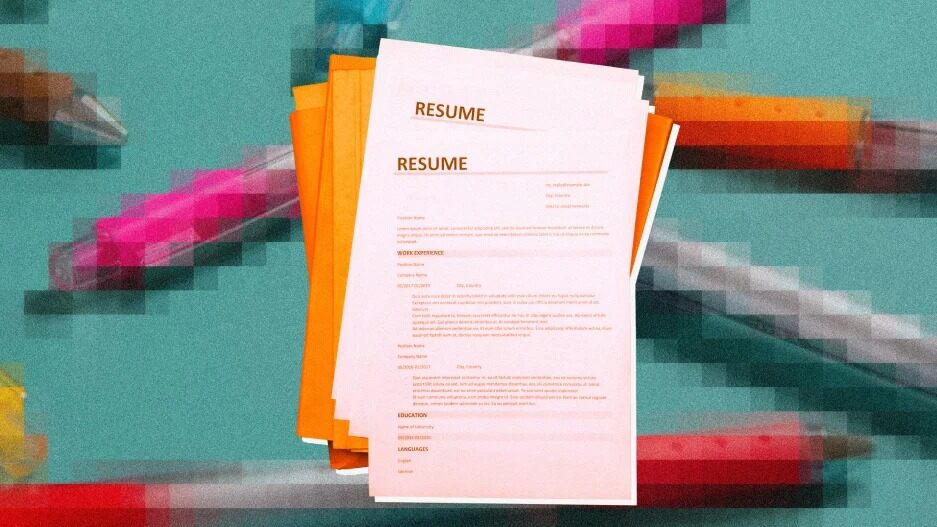- | 8:00 am
7 red flags that indicate someone used generative AI on their résumé
Do you have strategies in place to determine whether candidates are qualified?

The many steps recruiters have to take to properly assess candidates have always been fairly difficult to navigate. And with more tools popping up every day that help potential hires appear more skilled than they may actually be, it’s tougher than ever.
At this point in time, talent acquisition professionals are well aware that a large quantity of people are using generative AI tools like ChatGPT for résumés, but not all of them know how to combat the increased volume of unqualified applicants. This article will provide the lay of the land and upsides of AI assistance as well as a list of red flags to look out for and strategies to mitigate mis-hires.
JOB SEEKERS ARE LIKELY USING AI
Recently, COMPUTERWORLD surveyed 2,153 job seekers about their experience using ChatGPT in their job search. A resounding 88% of them said they are either somewhat or highly likely to use it for their future application materials.
We can’t blame modern job seekers for using the new technology. After all, 78% of those surveyed earned an interview after taking advantage of it and 59% were hired!
The survey also uncovered the fact that four out of 10 interviewers were unable to identify candidates that had used it. However, the surveyed job seekers did state that 35% of them didn’t get the job because their interviewer was aware of their usage.
The landscape is a bit confusing.
Is ChatGPT a detractor from quality application materials? Are certain job seekers simply using it incorrectly? Are some recruiters discounting its abilities?
There are positives to this new innovation, but the technology is tempered by laziness in some applicants and prejudice in some talent acquisition professionals.
Let’s dive in deeper.
THE UPSIDE
ChatGPT can generate a solid start for candidates as long as they provide the correct prompt. Candidates need to know what they require of the AI, provide what it needs to be successful at the task (such as their résumé, goals and the role they are applying for). Essentially, candidates can execute their application process faster if they spend time working out the right prompt and if they tailor the output afterward.
In addition to providing a head start with proper prompt usage, ChatGPT might allow English as a second language (ESL) candidates to more clearly present their value proposition to recruiters. It can be difficult for people whose first language isn’t English to fine tune a résumé, but that doesn’t mean they are any less qualified.
Finally, ChatGPT can pair up a candidate’s skills with the requirements in a job description and then candidates can modify the output from there. That is, in our minds, the best use case for the new technology.
RED FLAGS
So with the upsides in mind, let’s examine how to identify a poorly executed ChatGPT résumé.
First off, if the résumé directly mirrors the asks in the job description without personality, it has probably been generated (badly) using ChatGPT.
Second, if the résumé you receive showcases a completely different style of writing than the other application materials, ChatGPT (or another similar tool) is likely at play.
Third, if you start seeing résumés come through that seem oddly familiar, for example, two nearly identical résumés, they are likely from ChatGPT, and, quite frankly, lying is afoot. Speaking of lies, when ChatGPT is unable to find a point of reference, it can fabricate “facts” fairly convincingly. Inaccurate or false information is par for the course and should be on your radar.
Fourth, ChatGPT was trained on information prior to 2021, so if you are sourcing for a role that is newer, “ChatGPT may not fully understand the context and nuance of [the required] work experience, achievements and career goals.”
Some other red flags to look out for are generic phrasing, strange formatting , and repetitive language.
IDENTIFICATION STRATEGIES
The fact is, if executed well, it can be pretty difficult to flag all applicants who have utilized generative AI technology (and it’s not always productive to do so). But if you want to make sure you are getting a quality candidate, here are some strategies you can employ.
- Ask personal, experience-based questions as a part of your application process.
Try to learn whether they have the practice experience or potential to solve the problems you need help with by posing questions designed with that specific candidate in mind. - Lean heavily into reference checks.
Don’t disregard the power of praise. Contact all the references on their list but also consider the testimonials on their LinkedIn profile when you are doing your vetting. - Pay close attention to the skills section.
Are their skills identical to the job description with little deviation? That could be a desperate ploy to earn the job and a major indicator of applicants who are faking it. - Implement phone screens.
Screening through a phone call can be a great tool to see whether you’re speaking with a real-deal candidate. Ask them some introductory questions and see how they respond. The truth will reveal itself most times. - Observe their in-person or email presentation.
If you bring in a candidate for an interview or if you contact the candidate via email, take note of potential discrepancies between their résumé writing style and presentation. The difference can be quite stark. - Cross-check what they have written versus how they are positioned on LinkedIn and other platforms.
Again, different writing styles and inconsistently represented qualifications are major indications of falsification in applications. Take the time to compare materials if you want the full picture. - Consider including other options (ideally something proprietary to your company) beyond résumés and cover letters in your application process to guarantee human involvement and potential fit. Practical exercises can help you further assess that a candidate can do the work they say they can do. For analytical roles, this could take the form of solving a problem using sample data, or for creative roles, you might ask a candidate to create something that showcases a relevant skill.
This article originally appeared on Beacon Hill Staffing’s blog and is reprinted with permission.








































